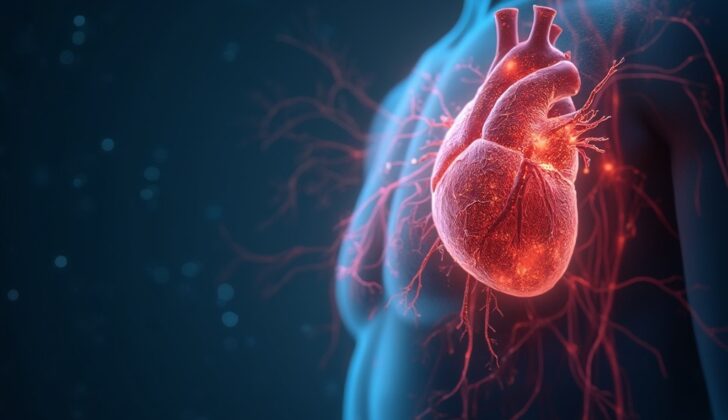What is Acute Coronary Syndrome?
Acute coronary syndrome, or ACS, is a term used to describe several conditions that affect the heart. These include ST-elevation myocardial infarction (STEMI), non-ST elevation myocardial infarction (NSTEMI), and unstable angina. These are all different types of coronary heart disease (CHD), a condition that accounts for a third of all deaths in people over the age of 35. While some forms of CHD might not show any symptoms, ACS always does.
What Causes Acute Coronary Syndrome?
ACS, or Acute Coronary Syndrome, is a condition that’s linked to coronary heart disease. It mainly happens due to a disruption of fatty deposits or plaque in the heart’s arteries, known as atherosclerosis. Some common risk factors for ACS include smoking, high blood pressure, diabetes, high cholesterol levels, being male, physical inactivity, family obesity, and poor diet habits. Misuse of cocaine can also lead to blood vessels tightening abnormally. Furthermore, if there’s a family history of very early heart attacks (before 55 years of age) this significantly increases the risk.
Risk Factors and Frequency for Acute Coronary Syndrome
Coronary heart disease (CHD) impacts around 15.5 million people in the United States. According to statistics from the American Heart Association, a heart attack happens every 41 seconds. In fact, heart disease is the number one killer in the country. One of the main symptoms, chest pain, is a common reason people rush to the emergency department.
- About 15.5 million individuals in the United States are affected by coronary heart disease.
- A heart attack occurs every 41 seconds, according to the American Heart Association.
- Heart disease is the leading cause of death in the country.
- Chest pain, a primary symptom, often leads to emergency department visits.
Signs and Symptoms of Acute Coronary Syndrome
ACS, or acute coronary syndrome, is typically characterized by severe chest pain behind the breastbone, often described as feeling like a crushing pressure. This pain can also spread to the jaw or the left arm. However, this is not always how ACS presents – it can also appear as shortness of breath, lightheadedness, isolated jaw or left arm pain, nausea, a pain in the upper abdomen, sweating, and feeling weak. It’s important to note that the elderly, women, and those with diabetes are more likely to experience these less-known symptoms, which is why a high level of caution is recommended in these cases.
When a doctor examines a patient with ACS, they often note general discomfort and sweating. The heartbeat usually sounds normal, but occasionally an extra or unusual sound (a ‘gallop’ or a ‘murmur’) can be heard. In some cases, they may also hear a crackling sound in the lungs, which can indicate heart failure resulting in fluid congestion in the lungs. Swelling in both legs could also suggest heart failure. A medical professional will check the rest of the patient’s bodily systems to ensure they’re functioning normally and to check for any other potential health issues.
- If there is tenderness in the abdomen, conditions like pancreatitis and gastritis might be considered.
- The presence of differing pulse strengths between the two sides of the body could suggest an aortic dissection – a serious condition where the large blood vessel branching off the heart tears.
- Swelling in just one leg might lead to an investigation for a pulmonary embolism, which is a blockage in one of the pulmonary arteries in the lungs.
It is crucial that a thorough physical examination is carried out to rule out other potential life-threatening conditions.
Testing for Acute Coronary Syndrome
The first step in assessing a patient with potential heart issues is to perform an ECG, a test that checks the heart’s activity. This helps doctors tell the difference between certain serious heart conditions. According to the American Heart Association, anyone who comes to the hospital with symptoms that suggest a heart problem should receive an ECG within the first ten minutes of arrival.
If the ECG indicates a severe heart attack (STEMI), the hospital’s heart procedure room (Cath lab) should be prepared for immediate use. Tests looking for signs of heart damage such as troponin and CK-MB/CK ratio are crucial in differentiating between a less severe heart attack (NSTEMI) and heart strain without damage to the tissue.
A chest x-ray can be a valuable tool to diagnose other causes of chest pain such as pneumonia and collapsed lung. Blood tests including complete blood count (CBC), chemistry, liver function test, and lipase can also help doctors rule out conditions related to the belly that might cause chest pain. It is important to consider and check for other serious conditions like aortic dissection (tear in the heart’s major artery) and pulmonary emboli (blockage in the lungs) if the patient’s situation suggests these possibilities.
Treatment Options for Acute Coronary Syndrome
The first step in treating all types of Acute Coronary Syndrome (ACS), which is a type of heart problem, is usually to give the patient aspirin and heparin, a type of medicine that prevents blood clots. This is given through an injection, unless there are reasons why these medicines shouldn’t be used.
Other medicines that prevent blood platelets from sticking together, such as ticagrelor or clopidogrel, are also recommended. The choice of which one to use depends on the preference of the heart specialist. It’s important to note that ticagrelor isn’t given to patients who are receiving a therapy to dissolve blood clots.
Additional treatments to make the patient comfortable, like pain control with specific types of strong painkillers and oxygen if the patient has low oxygen levels, are also provided as needed. Nitroglycerin, which comes as a small tablet that dissolves under the tongue or as an infusion, can be used to relieve chest pain. But in cases of certain types of heart damage, nitroglycerine can cause dangerously low blood pressure and should be used very carefully, if at all. The patient’s heart rhythm will be monitored continuously for any irregularities.
What follows next in the treatment plan for ACS depends on the specific type of ACS: either a STEMI, NSTEMI, or unstable angina.
If it’s a STEMI, a type of heart attack, the American Heart Association advises urgent heart catheterization and a procedure to open up the blocked artery. This should ideally start in under 90 minutes. If this can’t be done, and the patient can’t be taken to the heart catheterization lab within two hours, a clot-dissolving medicine is recommended, with a goal to give it less than 30 minutes from the time the patient reaches the hospital.
If a patient has NSTEMI or unstable angina, another type of heart problem, the initial treatment is the same: aspirin and heparin. If the chest pain persists, they should have urgent heart catheterization. If the symptoms can be controlled, the decision about when to perform catheterization and other heart tests can be made on a case-by-case basis depending on the patient’s other health conditions.
ACS always requires hospital admission and urgent evaluation by a heart specialist. Sometimes, a CT angiogram might also be performed. This depends on whether the facility is available and what the heart specialist prefers.
Medicines that control heart rate, lower cholesterol, and reduce blood pressure should be started immediately in all ACS cases, unless there are reasons why they shouldn’t be used.
In cases where the blocked heart artery can’t be opened with a procedure, a bypass surgery might be considered, or the condition may be managed with medicines alone. This depends on the patient’s other health conditions and personal preference.
What else can Acute Coronary Syndrome be?
Sometimes, when a doctor is examining someone for a specific health problem, they need to consider whether other conditions could be causing the symptoms. For instance, if a patient has chest discomfort, it could be due to any of the following:
- Acute pericarditis (inflammation of the membrane enclosing the heart)
- Anxiety disorders (mental health disorders characterized by feelings of worry, fear, or anxiety)
- Aortic stenosis (narrowing of the heart’s aortic valve)
- Asthma (a respiratory condition where airways become narrow and inflamed)
- Dilated cardiomyopathy (a disease of the heart muscle that leads to heart enlargement)
- Acute treatment of gastroenteritis (a condition that causes upset stomach)
- Esophagitis (inflammation that damages tissues of the esophagus)
- Hypertensive emergencies (serious conditions related to high blood pressure)
- Myocardial infarction (commonly known as heart attack)
- Myocarditis (inflammation of the heart muscle)
it’s important for the care provider to investigate all possible causes carefully to ensure the correct diagnosis and most effective treatment plan.












